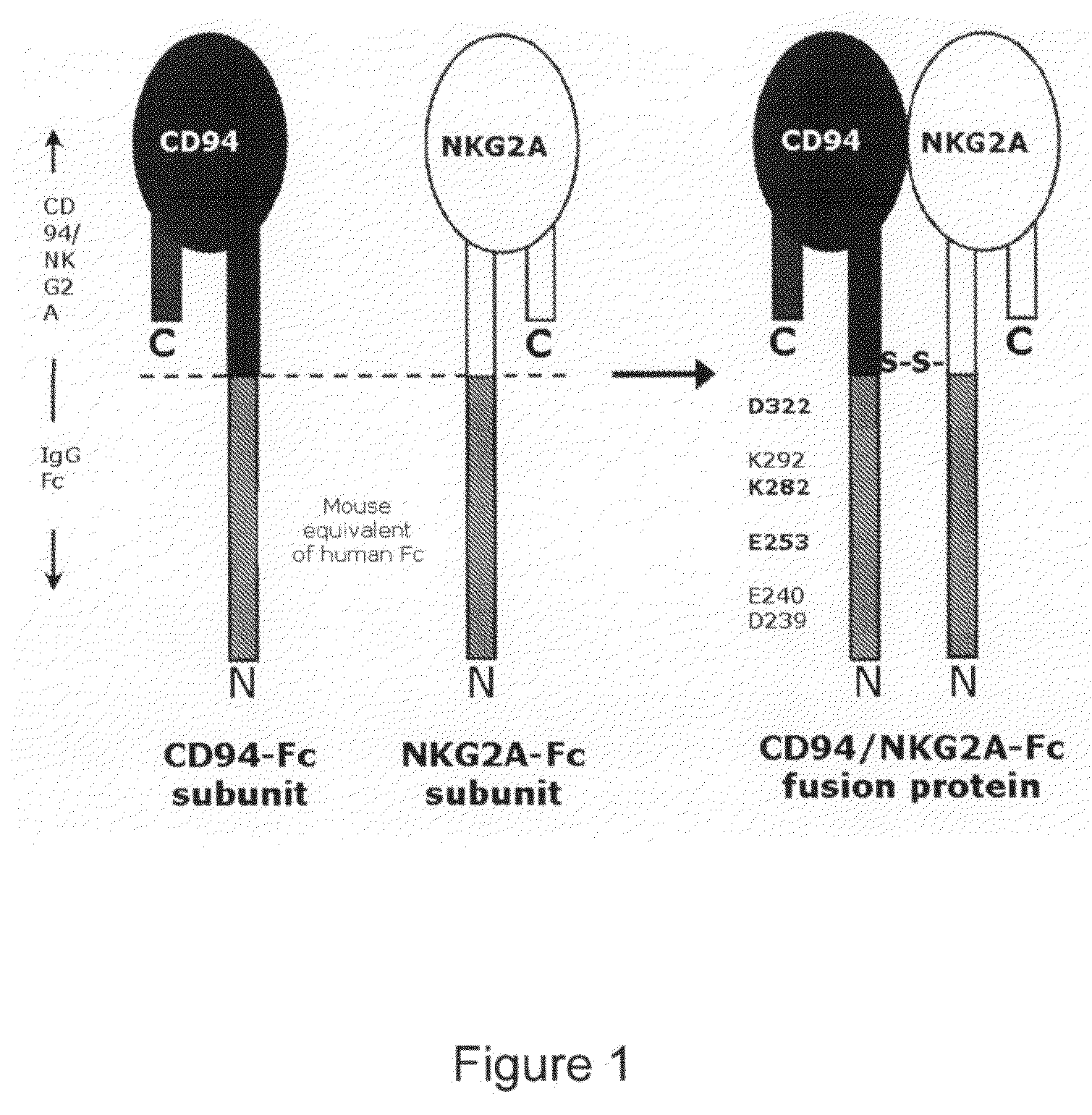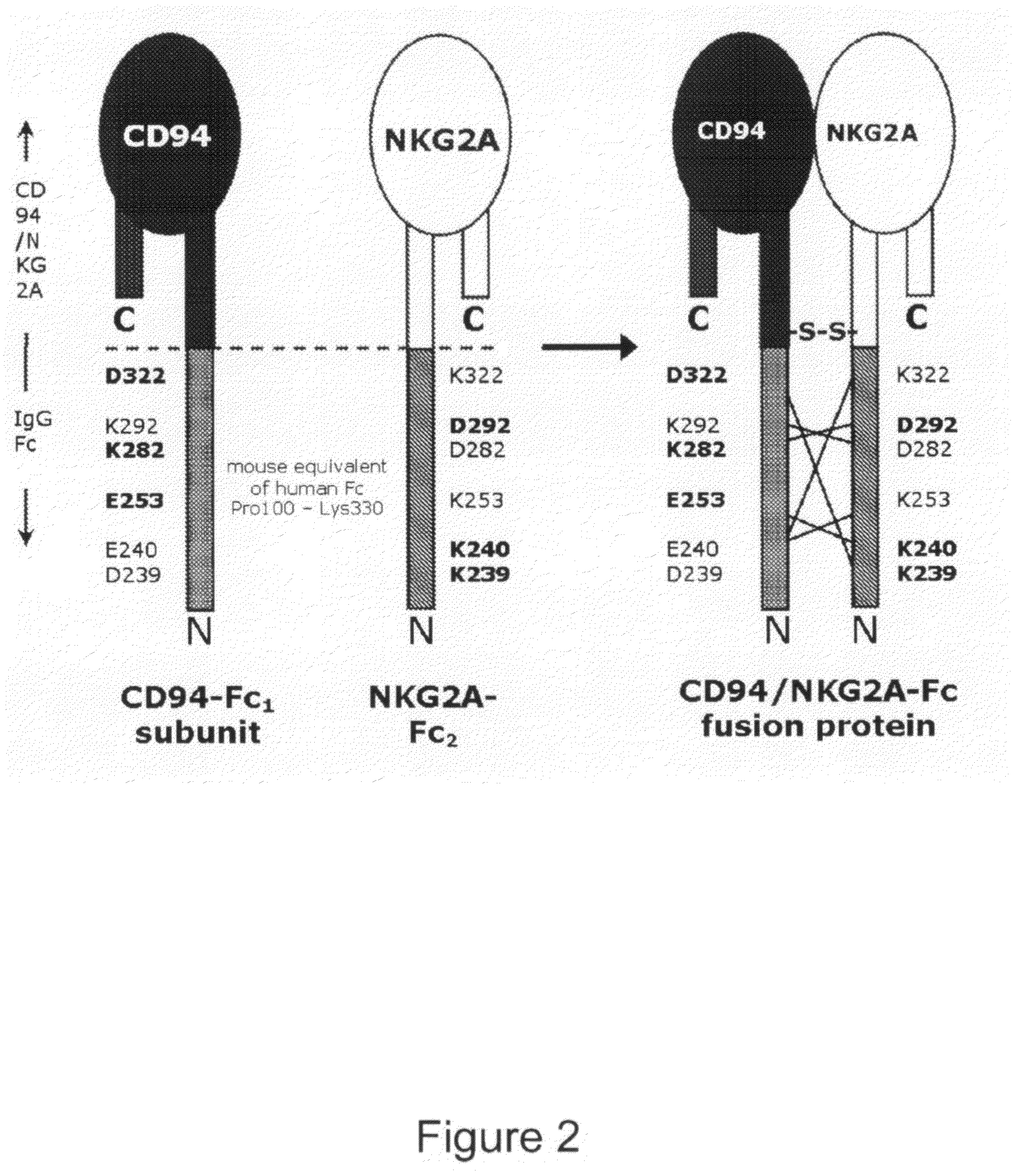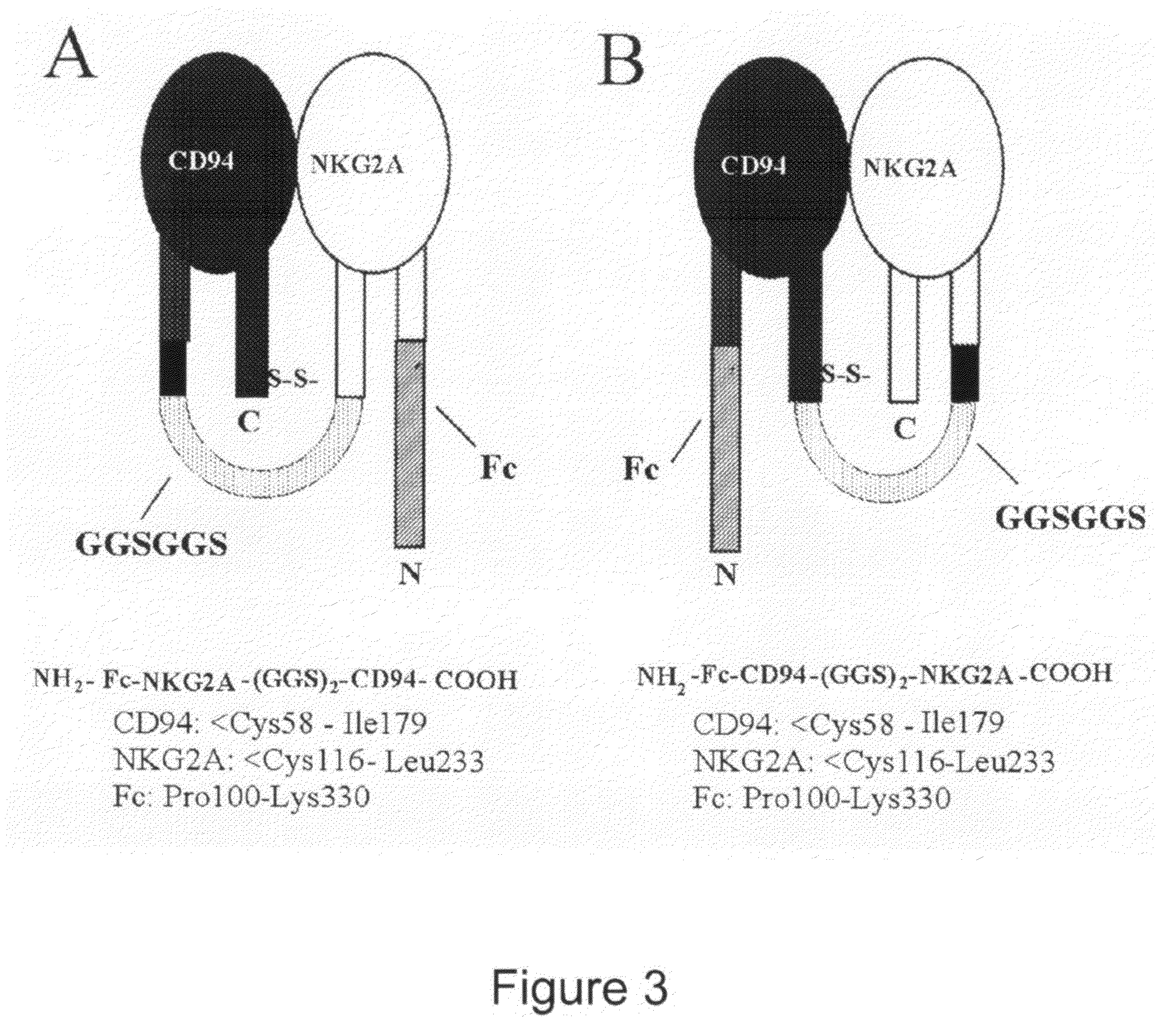Soluble heterodimeric CD94/NKG2 receptors fusion proteins
a fusion protein and heterodimeric technology, applied in the field of soluble heterodimeric receptors, can solve the problems of more difficult and difficult to design soluble versions that are sufficiently stable, and have, so far, proved difficul
- Summary
- Abstract
- Description
- Claims
- Application Information
AI Technical Summary
Problems solved by technology
Method used
Image
Examples
example 1
Modelling of CD94 / NKG2A Interaction with HLA-E
[0182]This Example describes in silico modelling identifying CD94 / NKG2A segments covering the interaction with HLA-E. The protein data base (PDB; Protein Data Bank) referred to herein is described in: H. M. Berman, J. Westbrook, Z. Feng, G. Gilliland, T. N. Bhat, H. Weissig, I. N. Shindyalov, P. E. Bourne: The Protein Data Bank. Nucleic Acids Research, 28 pp. 235-242 (2000). PDB identifiers are always 4 alphanumeric characters, e.g., 1NKR & 1OM3, sometimes referred to as 1 NKR.pdb & 1OM3.pdb.
[0183]A model of CD94 / NKG2A complexed with its ligand HLA-E was built in silico. For this, a model of the CD94 / NKG2A heterodimer was built using the X-ray structure of the CD94 homodimer as a homology model (PDB-ID:1B6E). In addition, the resolved crystal structure of HLA-E was used (PDB-ID:1MHE). The complex of CD94 / NKG2A and HLA-E was then built in silico, using the X-ray structure of the related NKG2D-MICA complex (PDB-ID:1HYR). The complete model...
example 2
Identification of Amino Acid Residues Responsible for Ionic Interactions in Immunoglobulins
[0186]References to heavy chain constant region position numbers here specifically indicate the position of the wild-type constant region sequence starting from the beginning (N-terminus) of CH1 (similar to Uniprot-id:IGHG1_HUMAN (SEQ ID NO:20). For constant light chain positions, numbering is according to Uniprot-id:KAC_HUMAN (SEQ ID NO:10). The amino acids responsible for the ionic interactions in human IgG1 s were identified using an analysis of X-ray structures available for the CH3-CH3 domain-domain interactions of both the GM and KM allotypes, and X-ray structures available for CH1-CKappa and CH1-CLambda interactions.
[0187]Specifically, the following KM X-ray structures were analysed: 1HZH, 1ZA6, 1OQX, 1OQO, 1L6X; the following GM X-ray structures were analysed: 1T89, 1T83, 1IIX, 1H3X; the following CH 1-Ckappa X-ray structures were analysed: 1TZG, 1HZH; and the following CH1-Clambda X-r...
example 3
Cloning of Soluble Human CD94 (hCD94) and Human NKG2A (hNKG2A)
[0218]Human CD94 (hCD94) and human NKG2A (hNKG2A) were cloned from a human NK cDNA library purchased from Spring Bioscience (#PHD-138). Primers were designed using sequences from the NCBI database with accession numbers U30610 (hCD94) and AF461812 (hNKG2A). Primers used for hCD94 were
[0219]
(forward; SEQ ID NO: 40)5′ GGATCCTCTTTTACTAAACTGAGTATTGAGCCAGC,and(reverse, SEQ ID NO: 41)5′ GCGGCCGCAGATCTATTAAATGAGCTGTTGCTTACAGATATAACG.
[0220]Primers used for hNKG2A were
[0221]
(forward, SEQ ID NO: 42)5′GGATCCCAGAGGCACAACAATTCTTCCCTG(reverse, SEQ ID NO: 43)5′GCGGCCGCAGATCTATTAAAGCTTATGCTTACAATG.
[0222]The forward primers contained a BamHI restriction site and the reverse primers contained NotI and BgIII restriction sites. The products were amplified using a touch-down PCR-procedure.
[0223]Soluble hCD94 resulted in a 438 bp fragment that was cloned into pCR4blunt-Topo and sequence verified. Soluble hNKG2A (405 bp) was cloned into pCR2.1-...
PUM
| Property | Measurement | Unit |
|---|---|---|
| flow rate | aaaaa | aaaaa |
| pH | aaaaa | aaaaa |
| concentration | aaaaa | aaaaa |
Abstract
Description
Claims
Application Information
 Login to view more
Login to view more - R&D Engineer
- R&D Manager
- IP Professional
- Industry Leading Data Capabilities
- Powerful AI technology
- Patent DNA Extraction
Browse by: Latest US Patents, China's latest patents, Technical Efficacy Thesaurus, Application Domain, Technology Topic.
© 2024 PatSnap. All rights reserved.Legal|Privacy policy|Modern Slavery Act Transparency Statement|Sitemap



